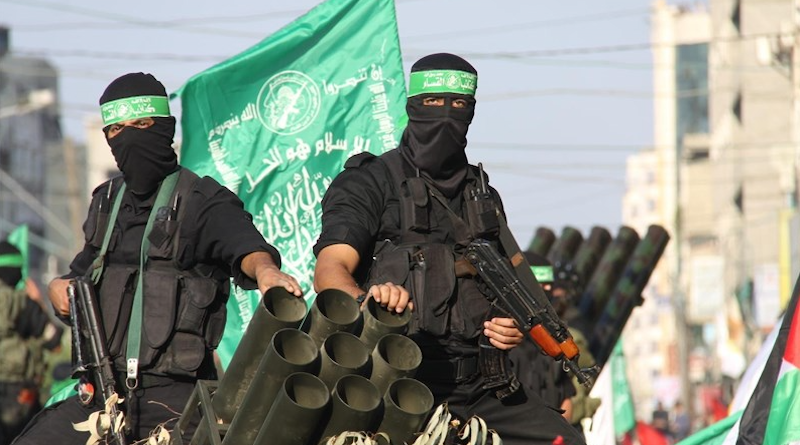
Initial reports of the gruesome massacre carried out by Hamas in Israel on October 7 came with an unpleasant sense of déjà vu. After the last conflagration in Gaza in May 2021, I had written an article with the unfortunate title, ‘Until the next time…’ It was a safe prediction because the scars of the battles of 2008 and 2014 were still raw and the seeds of this escalation were being sown, even as a tenuous ceasefire had started to take hold.
While the sheer scale of the October 7 terror attacks was unprecedented and has caused more Israeli casualties than any incident since the Yom Kippur war in October 1973, it has also prompted a host of legitimate questions: How did it happen? Why and why now? And what happens next?
It will take a while before we have definitive answers, but we can attempt an educated guess based on what we currently know.
How could Hamas hoodwink the much-vaunted Israeli intelligence and unleash such carnage? Hubris about its capabilities, accompanied by a disdain for its opponent, might be one part of the answer. Some Israeli commentators also blame PM Benjamin Netanyahu for sowing discord in the country’s security establishment through his proposals to tamper with the judiciary, with the focus on internal unrest over the last few months possibly becoming a contributory factor for the lapse. And Iran clearly seems to have played a role in the marked expansion of Hamas’ capabilities in terms of its tactics, the range and accuracy of its rockets and the use of drones and paragliders.
But there is also a second, less evident dimension. It has become fashionable to forget the support that Hamas received from Israel during its formative years in the 1980s when Shin Bet, the Israeli domestic security agency, saw it as a useful tool to undermine the secular and nationalist Palestine Liberation Organisation. And some of that tendency has continued till date as Israeli policies have effectively emasculated Palestinian President Mahmoud Abbas and the Palestinian Authority and allowed Hamas to emerge as the dominant political and military force in Gaza with a growing footprint in the West Bank. Ismail Haniyeh, the current head of Hamas, is mostly based in Qatar, as is Khaled Mashal, the previous leader. Cash from Qatar passes through the watchful eyes of Israeli intelligence to fund the Hamas administration in Gaza. The Hamas-Israel relationship is a classic case of creating a monster that gets out of hand.
Why did the massacre happen? Because it almost had to. For anyone watching the region, the simmering rage, the frustration and the manifest absence of hope for a better future was all too palpable. When you trap 2.2 million civilians into a 225-square km strip with the Mediterranean on one side and the Israeli wall on the other to create the world’s largest open-air prison, you have created a powder keg waiting to explode; the hapless inhabitants of this prison are the second or third generation of refugees ousted from their ancestral lands after the 1948 and 1967 wars. And the situation isn’t a whole lot better in the West Bank, where illegal Jewish settlements continue to expand under official sanction. The Netanyahu government is by far the most extreme in Israel’s history, with members like National Security Minister Itamar Ben Gvir and Finance Minister Bezalel Smotrich becoming provocateurs in denying political legitimacy to Palestinians living in the occupied territories. The old Israeli policy of trading land for peace has clearly been consigned to the dustbin of history. The current government thinks that the land in the occupied territories is its to grab, and peace, if required, will flow from the barrel of a gun.
So, why did Hamas attack now? There is a temptation to overthink the answer and connect it with Iran’s desire to undermine the Biden administration’s energetic attempts to broker a peace deal between Saudi Arabia and Israel. That is possible, of course. But equally possible is the symbolism of launching the attack on the 50th anniversary of the Yom Kippur war — a conflict in which both Israel and the Arabs could claim victory. Or to see it simply as the most opportune time for a surprise offensive.
It is hard to predict what will happen next. Israel appears determined to exact severe retribution, even if it means blatant violation of international law through collective punishment and huge civilian casualties in Gaza. A worst-case scenario will see an Israeli ground invasion of Gaza that comes after waves of devastating bombardment by the air force and artillery. It would push the unfortunate hostages held by Hamas closer to the brink of death and a humanitarian catastrophe would inevitably ensue. To make matters worse, this could draw Lebanon-based Hezbollah into the conflict and open a dangerous second front. Intense diplomatic efforts are underway to prevent the situation from getting out of hand, but it would be premature to expect tangible results until Israel’s thirst for revenge has been quenched by a copious amount of Palestinian blood.
And what happens after that? Will Israel again end up occupying Gaza? Can it really accomplish its aim of obliterating Hamas and extinguishing the will of disenfranchised Palestinians to resist? Right now, it is hard to see any sliver of light at the end of the tunnel. The Yom Kippur war shook up the status quo, led to the Camp David Accords of 1978 and established durable peace between Israel and Egypt. Will this Yom Kippur massacre of 2023 culminate in the exit of a discredited Netanyahu, shake up Israeli politics and produce centrist leaders like Yitzhak Rabin, who were willing to risk their lives for peace? Will Palestinians mobilise to get a better leadership than the redundant Mahmoud Abbas on the West Bank and the fanatical Hamas in Gaza? Right now, it seems like a fantasy. But the alternative to the fantasy is the inevitable reality of the next time, and the one after that.
